






| Odiellus spinosus (Bosc, 1792) |







|
|
Scientific name: Odiellus spinosus (Bosc, 1792) Common name: French name: Faucheur épineux Order: Opiliones Family: Phalangiidae Size: Body size: 7 to 10,5 mm for females; 7 to 8,5mm for males. Biotope: Dry woodlands but also near human buildings in wall crevices (synanthropic species). Web: No web. Observation period: You can observe adults from early July till late December with a peak in November. Geographic area: From the Iberian Peninsula to northern Croatia in the south, from southern England to Benelux in the north. It is expanding its range northwards and eastwards to eastern European countries. |
Odiellus spinosus is a harvestman with rather short legs and a big and slightly flattened body. You can recognize it by its "trident" which is made of three spines of near equal length. They are located on the front edge of the head, just ahead of the two eyes. These spines are rather thick and are pointing forward. The ground colour of the body varies from pale brown to brownish grey. There are some white dots. There is a dark patch on the back. It is a rectangular shape (though the sides are slightly wavy), almost black at the rear and ending with a white line. It is called the "saddle". There is a possible confusion with the harvestmen of the Lacinius genus which show a similar short-legged shape. These last ones do not show the pale line at the back of the saddle. Furthermore Lacinius dentiger and Lacinius horridus show three thinner spines, like arrow points. Lacinius ephippiatus show three small spines pointing upwards. Here is a short synthesis of the morphological differences between Odiellus spinosus and Lacinius ephippiatus: The central spine in the trident is longer than the two other ones on Odiellus spinosus, all three spines are the same section. The three spines are the same length on Lacinius ephippiatus, the central spine has a thinner section. The black area at the rear of the saddle ends with a straight edge and is widened on each side to form an anchor shape on Odiellus spinosus. It ends with rounded corners and a small notch in the middle on Lacinius ephippiatus, this looks like buttocks. The femora of Lacinius ephippiatus show rows of small spines and have an angulous section. The femora of Odiellus spinosus have a rounded section and do not have spines. |
| [To know more about the Odiellus spinosus] [Next picture] [Top] |
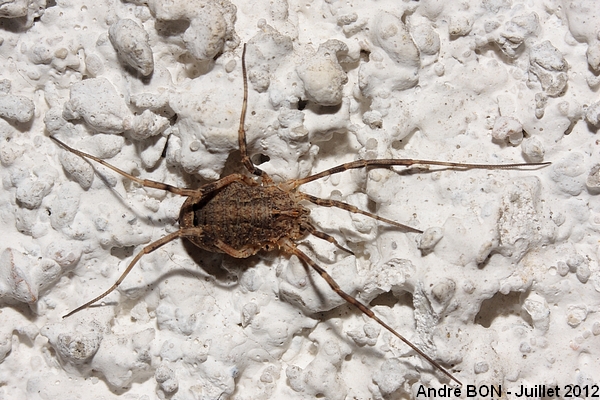
|
I am used to rather often observing Odiellus spinosus in my garden. It is mainly active during the night and those that I observe during the day have been disturbed in their diurnal hiding place. |
| [To know more about the Odiellus spinosus] [Next picture] [Previous picture] [Top] |
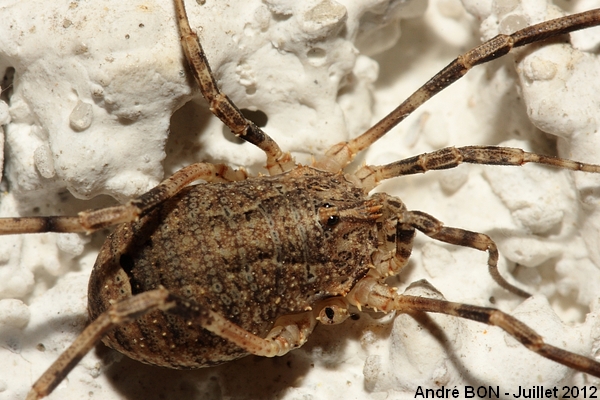
|
The trident is clearly visible on this upper side view. |
| [To know more about the Odiellus spinosus] [Next picture] [Previous picture] [Top] |

|
You can clearly see the straight rear edge of the saddle, widened like an anchor. This confirms the Odiellus spinosus species. |
| [To know more about the Odiellus spinosus] [Next picture] [Previous picture] [Top] |
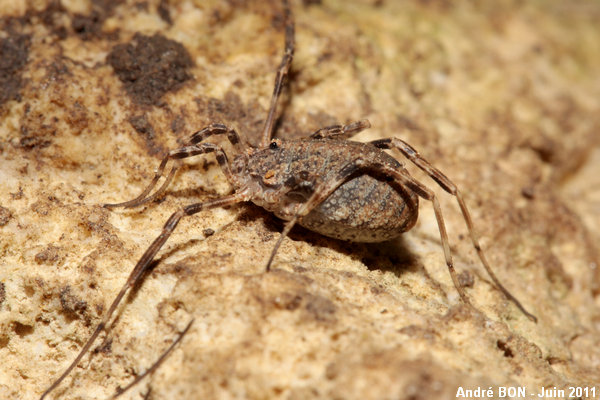
|
On this view, you can see the central spine of the trident which is a little longer than the two other ones. You cannot distinguish any spine on the femora. This is another confirmation of the Odiellus spinosus species. |
| [To know more about the Odiellus spinosus] [Next picture] [Previous picture] [Top] |
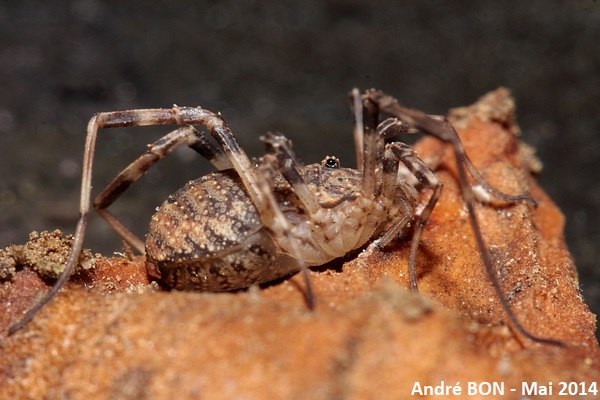
|
Odiellus spinosus observed among dead leaves. |
| [To know more about the Odiellus spinosus] [Next picture] [Previous picture] [Top] |
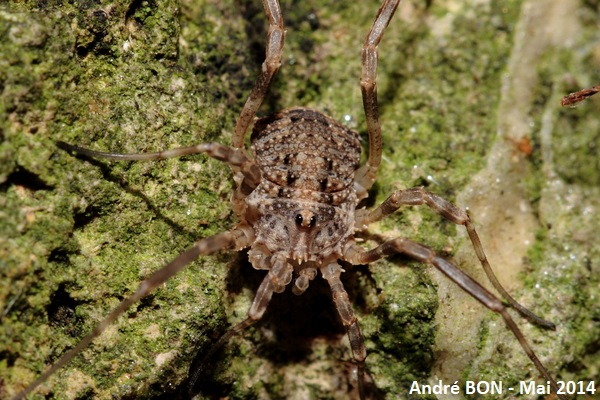
|
Odiellus spinosus observed after having lifted a stone. |
| [To know more about the Odiellus spinosus] [Previous picture] [Top] |
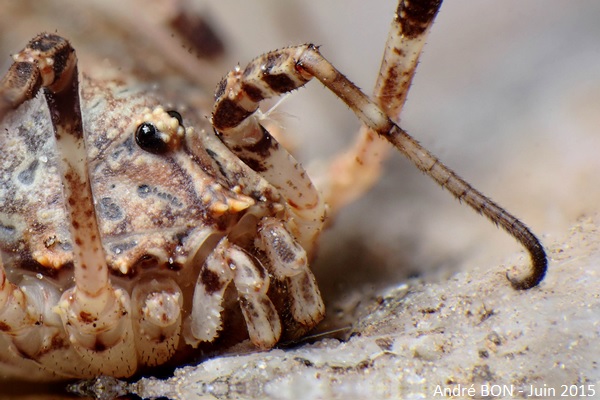
|
After having bought a rail to perform "photo stacking" I started to search a living but immobile subject to apply this technique which combines a series of pictures to increase the depth of field with high magnification. One Odiellus spinosus, immobile on a stone, has been a kind subject this time. This picture is the combination of 29 shots, shifted each time of one-tenth of millimetre, taken using a reverse-mounted 24 mm lens. The combination of pictures has been done with CombineZP software. This Odiellus spinosus has been very cooperative but at the thirtieth shot it felt that the lense was too close and it decided to walk to hide under another stone … I noticed afterwards that the nice view on the ocularium is due to the lack of the first right leg. |